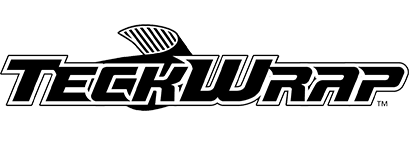The Very Key to a Successful Bumper Wrapping
We have had quite a few articles talking about how to wrap bumper well. However, there is a very crucial point to a successful finish, which is to see this giant bumper in sections rather than one big chunk. In other words, observation before installation becomes particularly important here.
Let’s take a front bumper as an example. If we see it as one part and try to wrap in one piece of material, it is going to be a difficult job, especially if you are not working in a team.
If we look carefully, this bumper is actually broken up into smaller sections, where a vehicle has already got natural breaks on it. And to notice these sections is an important technique for wrappers.
We highly recommend installers to wrap section by section, which will make it easier and lower down not only the pressure for installers but also, the pressure from the adhesive and the film in terms of holding the entire bumper with one giant piece.
There is also another great thing about wrapping in sections. That is we can wrap with scraps that we have left throughout our job. By using scrap pieces, we will not have to take extra material from the roll anymore. What we use is basically going to be thrown into trash or used for practice anyway. So it saves our budget to some extent.
When applying, we can put the backing paper directly underneath the bumper section(s) as we release it to keep the dirt down. A bumper can normally be broken up into three sections: Left, right, and the center. We can set up each piece before application.
By breaking this one part into smaller sections, working the material around evenly into the corner, then underneath the bottom, we lower down the tension of the film on the surface, thus there would be less bunches or wrinkles. Even more, this helps us do our job faster and more efficiently in a way that gives high quality and better durability. Installers can be less anxious thinking about how to do it perfectly too, as small pieces are easier to wrap than one giant piece anyway.
After the application, we can use a bit of heat around the corner, and tuck the material in to the top. Cut along the portion and tuck the film in again so that the surface gets fully covered. Then finish the section off.
When cutting, there is less stress for wrappers if there is the wrong cut in this case. Because what we are using is a scrap piece, so there is no harm to take it off and start with another piece again (but of course, it will take a bit more time then).
However, if we try to wrap the bumper with one giant piece material, we are done if we make one bad cut because we will have to re-do the whole panel then. So again, wrapping section by section is going to keep us from so many troubles and promise a better process. Just finish one section alone each time.
You are going to experience how freely it is to work on bumper with less stress on the material itself. It is so much easier to make a relief cut to the top, then fold the material in towards the top. Even better, we can be so much more flexible to wrap better and farther on the section.
So before we wrap a bumper, do not forget to check out the natural breaks on the vehicle each time. And use those as advantage. Just do not see a front bumper as one chunk but three (sometimes four, it depends) sections.
Wrapping in sections will promise you high quality of the job. This is especially important if you are doing a color change, as clients are usually more critical than those ask for full print wrapping service.
Thus, the better we can see this bumper in smaller sections, and apply material section by section accordingly, the higher quality we will be able to achieve, as well as better durability, because the material will have less tension on the vehicle as you wrap in small pieces.
If you feel like there is a click in your mind after reading this, make sure you observe well before you do anything on the bumper ;)

